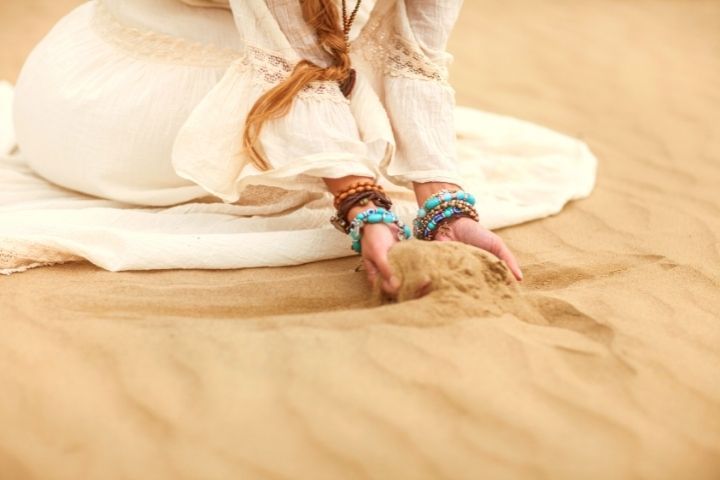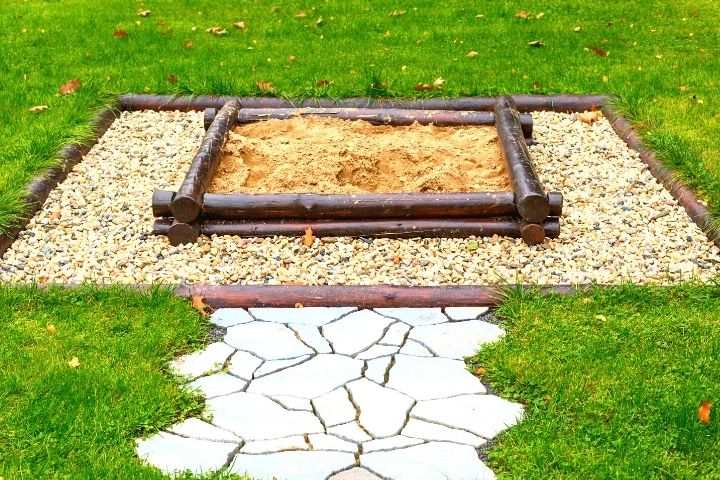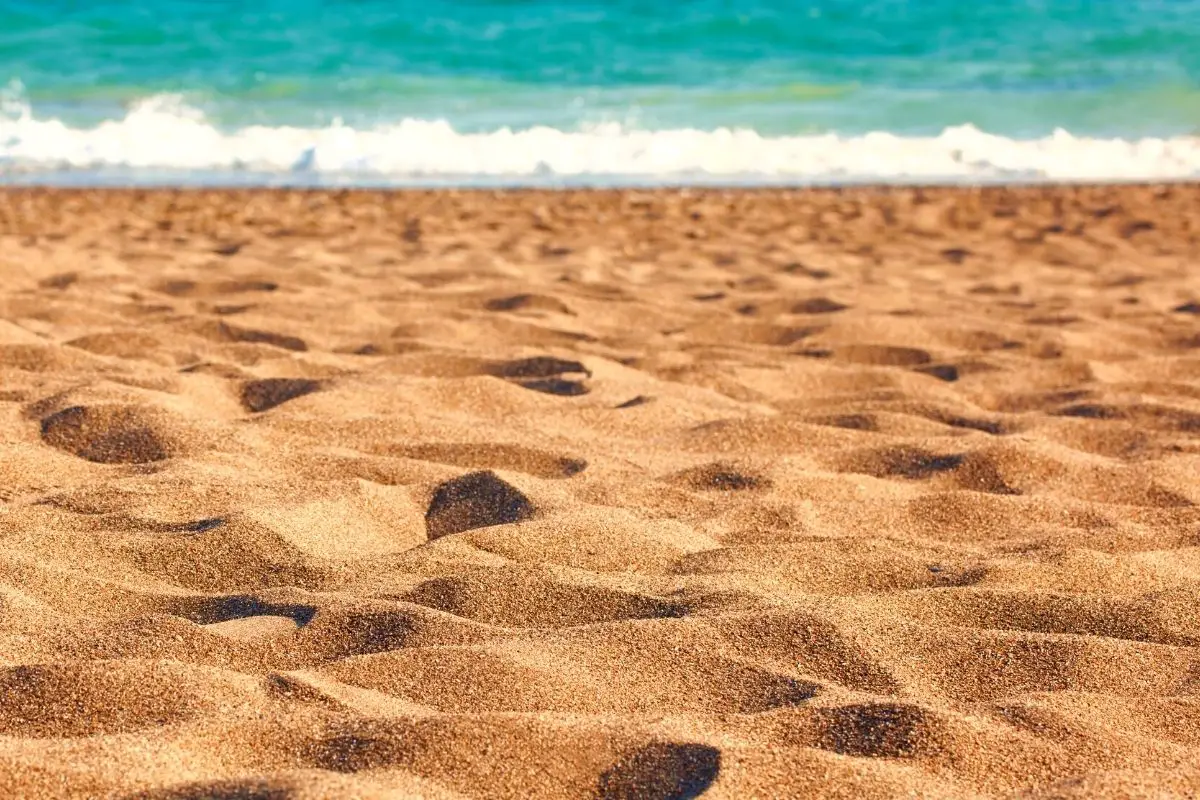Why is Sand Called Sand? Here’s What You Need to Know!
Sure, we’ve all interacted with it at one point in our lives. But, do you know where sand got its name from?
A lot of people are for the idea that the word ‘sand’ came from combining “sea” and “land” as it’s commonly found between the two places. Others are of the idea that the word comes from a more intricate history of linguistics, borrowing from the Dutch and English of old.
So, which of the two is really true?
Let’s find out…
Where Did the Word “Sand” Come from?
The etymology of sand, like many other words, is a bit more complex than just slapping together two relatively related words into a noun.
Originally, it is widely accepted that the word “sand” might have come from an Old English word, ‘zand’. Furthermore, the word ‘zand’ is also believed to have originated from an old Dutch word – ‘sant’.
This word was popularly used to refer to something finer than gravel, but much coarser than dust in those days.
So, from that alone, you can see how it didn’t immediately refer to the yellow grains found along the beaches. A countless number of people had probably not even seen the ocean all those hundreds of years ago…!

How is Sand Made?
Sand comes from a lot of diverse sources and environments. Some processes take longer than others to fully create sand while others are relatively shorter.
Some of the known raw materials that help create sand include:
- Decomposed corals
- Rocks
- Shells
- Living things’ by-products
Now, the following are some of the most common ways through which sand is made:
1. Abrasion and Attrition
Abrasion is a process where things like wind or water currents rub against a rock for a long time. This process constantly chips bits off the rock’s surface and carries the silica or feldspar away to other regions as sand sediments.
Attrition, on the other hand, is when solid particles are blown and hit against weak rock surfaces. This action results in bits of the weaker surface breaking off. In other instances, the small particles blown against these rocks may also break down, if they’re weaker, into smaller bits that later form sand.
2. Living things’ waste
Unknown to many, organisms like the parrotfish commonly found in Hawaii, also play a big part in sand formation. These interesting aquatic animals feed off the rock-hard surfaces of dead corals and rocks by biting and scraping off the algae growing on them.
Naturally, they also take in some bits of the hard rock or calcium carbonate into their digestive tracts. These bits are then ground and excreted from the fish’s body as fine, white sand that presently graces the glorious Hawaiian beaches.

3. Organic decay
This process particularly applies to the pink sands of Bermuda’s beaches.
These sands came to be as a result of the decaying of foraminifera – a type of single-celled and shelled organisms. They normally have a collective pick hue on their surfaces as they finally settle on Bermuda’s beach shores.
Types of Sand & Their Uses
What are some of the most common types of sand and where are they frequently used?
In truth, there are like a ton of them, so I’ll only talk about 3:
1. Sharp Sand
Use:
- Masonry work
- Concreting
Sharp Sand is also known as Pit or Coarse Sand because its particles are fairly large and its dug from pits dug about 1-2 meters below the crust. Its grains are quite sharp, angular in shape, and have an orange-red color because it has concentrations of iron oxide.
Because of these properties, Sharp Sand makes an ideal choice for making concrete as it binds really well to form a solid surface.
In addition, since the sand is mostly mined inland away from the ocean, it does not contain salts. Now, this is a good thing because it means that you won’t have to worry about it absorbing atmospheric moisture and causing your beautiful paint job to peel or flake.

2. Builders Sand
Use:
- Plastering
- Brick/Block laying
- Rendering
- General masonry work
Builders Sand is also called River Sand, Mason’s Sand, or Bricklayer’s Sand. It’s much finer than Sharp Sand because it has smaller grain particles.
Builders Sand also has more rounded and smoothened grains compared to Sharp Sand’s angular grains. This attribute is what makes them a mason’s favorite when it comes to plastering and screeding.
This type of sand is normally dug out from river beds or banks of water sources found inland. This means it also has fewer salt traces that could otherwise absorb atmospheric moisture and cause dampness in your structures.
Usually, Builders Sand comes with a greyish-white color, so it’s not that hard to miss.
3. Jointing Sand
Use:
- Children’s sandpits
- Recreational areas
- Golf bunkers
- Patio slabs and joint paving

This type of sand is also referred to as beach sand, sea sand, or washed sand and is mainly gotten from around coastlines and beaches.
As a result of the constant pushing and rolling from ocean tides, this sand is also very fine and smooth to the touch. It’s among the best sand alternatives for a sandbox and it’s easier on a child’s skin compared to Sharp Sand or Builders Sand’s texture.
And since it’s from the beach, often, Jointing Sand has to be first washed before it’s applied anywhere else. It helps to get rid of the salts and impurities that fill the sand from the high beach activities.
All in all, you won’t find a professional builder using it because of its saline nature. It also contains large traces of chloride that cause metal pipes or rods to rust very fast.
Frequently Asked Questions
Are there artificial sand?
Human beings have, over time, learned how to make artificial sand which has been majorly used in different projects in the construction industry.
The artificial sand is also called mechanical sand (m sand) or crushed sand. It refers to rocks, industrial waste granules, or mine tailings that have a less than 4.75mm overall particle size.
This type of sand is normally made through a series of processes which includes mechanical crushing and sieving.
Is sand actually fish poop?

Although an exciting thought – that is not always the case.
Most sand comes from rock sediments that break down around or near the sea as a result of wind and water hitting the large boulders over a long time.
However, the thrilling white sands found on the Hawaiian beaches are mostly made from parrotfish poop!
Parrotfish normally feed off algae that grow on rocks and dead corals. As they scrape and bite off the surfaces, they also ingest some of the hard calcium in the process. This calcium-carbonate matter is often indigestible and gets passed out as sand that finally washes ashore.
Can one eat sand?
Sand is not part of the known digestible elements.Usually, a handful of sand contains countless harmful compounds like metals, glass, bacteria, and many others that cause stomach complications. That is why you must keep a close eye on your kid(s) when playing in a sandbox to prevent them from accidentally harming themselves.





